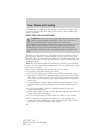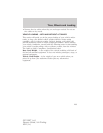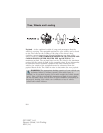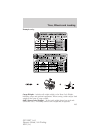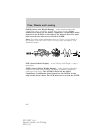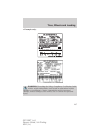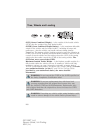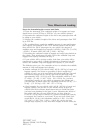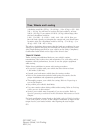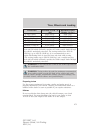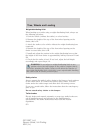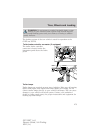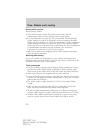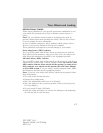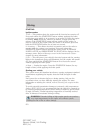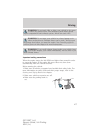
calculation would be: 635 kg - (2 x 99 kg) - (12 x 45 kg) = 635 - 198 -
540 = -103 kg. You will need to reduce the load weight by at least
240 lb. (104 kg). If you remove 3-100 lb. (45 kg) cement bags, then
the load calculation would be:
1,400 - (2 x 220) - (9 x 100) = 1,400 - 440 - 900 = 60 lb. Now you
have the load capacity to transport the cement and your friend home.
In metric units, the calculation would be: 635 kg - (2 x 99 kg) - (9 x
45 kg) = 635 - 198 - 405 = 32 kg.
The above calculations also assume that the loads are positioned in your
vehicle in a manner that does not overload the Front or the Rear Gross
Axle Weight Rating specified for your vehicle on the Safety Compliance
Certification Label found on the edge of the driver’s door.
TRAILER TOWING
Trailer towing puts additional loads on your vehicle’s engine,
transmission, axle, brakes, tires and suspension. For your safety and to
maximize vehicle performance, be sure to use the proper equipment
while towing.
Follow these guidelines to ensure safe towing procedure:
• Do not tow a trailer until your vehicle has been driven at least
1,000 miles (1,600 km).
• Consult your local motor vehicle laws for towing a trailer.
• Refer to the instructions included with towing accessories for the
proper installation and adjustment specifications.
• Thoroughly prepare your vehicle for towing. Refer to Preparing to
tow in this chapter.
• Stay within your vehicle’s load limits.
• Use extra caution when driving while trailer towing. Refer to Driving
while you tow in this section.
• Service your vehicle more frequently if you tow a trailer. Refer to
Special operating conditions in the Scheduled Maintenance Guide
chapter.
For load specification terms found on the label, refer to Vehicle loading
- with and without a trailer in this chapter. Remember to figure in the
tongue load of your loaded vehicle when figuring the total weight.
Tires, Wheels and Loading
270
2011 MKT (mkt)
Owners Guide, 1st Printing
USA (fus)



